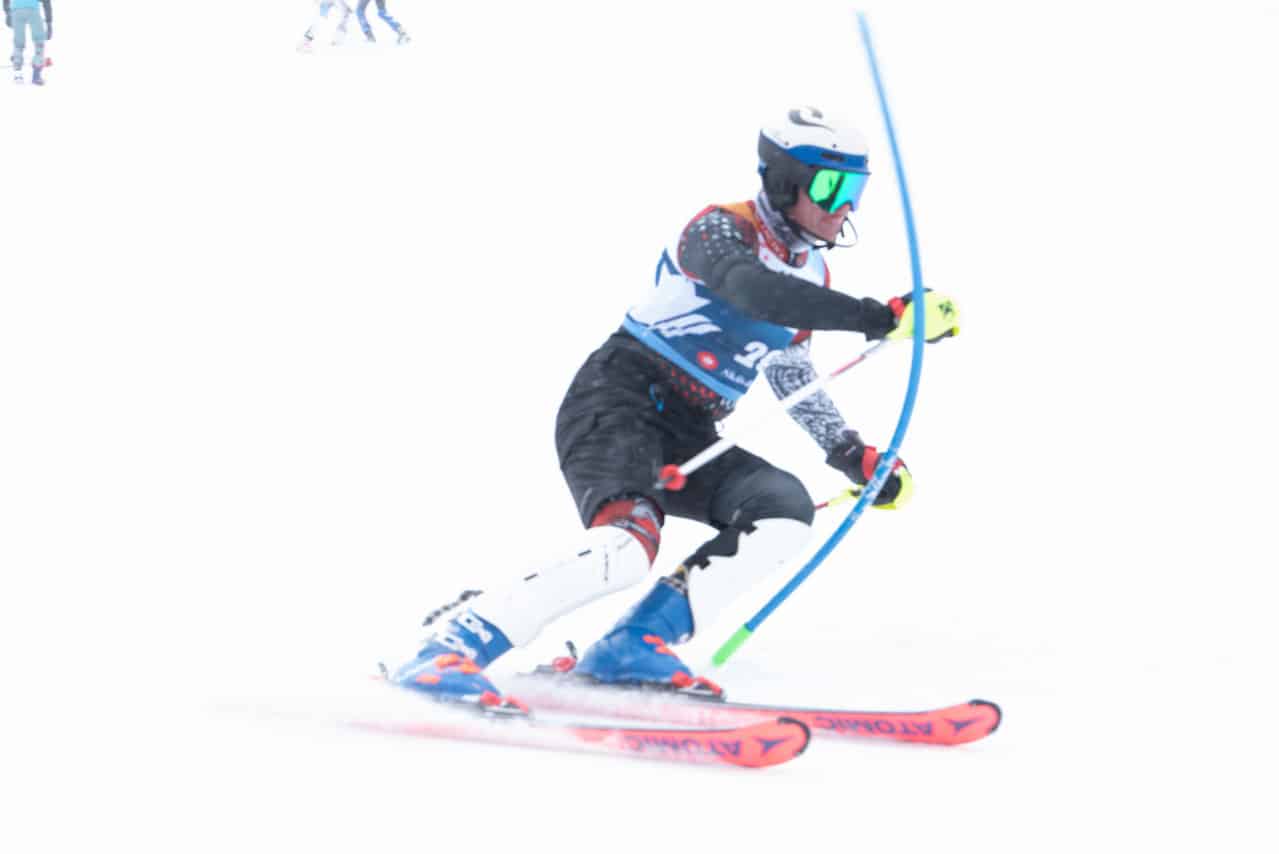
27 Mar Scott Shawyer on Skiing, Sailing, and the Drive to Compete
Scott Shawyer on Skiing, Sailing, and the Drive to Compete
For most people, mastering one high-adrenaline sport is challenge enough. For Scott Shawyer, president and skipper of Canada Ocean Racing, competitive skiing and offshore sailing are two sides of the same coin – both push his limits, test his resilience, and fuel his competitive drive. As he transitions from a winter on the slopes to a summer on the water ahead of the Ocean Race Europe, Shawyer reflects on how ski racing has shaped his mindset, fitness, and approach to competition.
A Winter on the Slopes
“Most years, I start with a preseason race camp out west, but this year I wasn’t able to go,” Shawyer shares. “Instead, I trained locally this season every Tuesday and Thursday morning at my local ski area, about 1,000 feet high with icy conditions, which is actually perfect for racing.”
Despite a lighter racing schedule, Shawyer made the most of the season. “I didn’t do any of the national races this year, but I competed in the Interclub race series and won our club championships, first in slalom, first in giant slalom, and first overall,” he says. “I’ve been skiing competitively since I was a kid, and I’ve continued racing as an adult. I just love it – nothing beats blasting down the hill on rails. And when you’re half decent at something, it’s easy to stick with it.”
The Competitive Mindset
Competition is what drives Shawyer, whether on snow or at sea. “Your results are evidence of the work you put in,” he explains. “I enjoy putting in the work, and I enjoy the test at the end of it. That’s what gives you feedback on whether your training has been productive and where you need to refine and try again.”
That mindset carries over from the slopes to the open ocean. “Skiing and sailing are similar in that they both require absolute focus. When I’m racing, I’m 100% locked in on the goal and going after it with everything I have. The difference is duration. Skiing is a minute, maybe a minute and a half of intensity, whereas sailing can be days or weeks. But the mental approach is the same.”
Cross-Disciplinary Training
While skiing itself may not keep Shawyer in peak sailing condition, the training does. “The strength, cardio, and overall conditioning work I do for skiing also prepares me for sailing. The training keeps me strong and injury-free, which is critical. It also keeps my competitive instincts sharp and builds confidence in my body and my skills.”
Interestingly, the mental approach to both sports is just as important as the physical. “You can’t ski race if you’re focused on what could go wrong,” he says. “I hear people at the top of the hill talking about how icy it is or how steep or technical the course is. That’s the wrong mindset. You have to focus on how well your skis are tuned, how much training you’ve done, how much you’re looking forward to the race. The same applies to sailing. You trust your preparation, stay positive, and focus on execution.”
The Balance Between Pushing Limits and Managing Risk
Both skiing and offshore sailing carry inherent risks, and Shawyer has learned how to balance pushing his limits with staying safe. “In a ski race, the goal is to get down the mountain as fast as possible. If you push too hard and crash, you’re out. So a lot of training is about finding your limits, pushing past 100% to see how far you can go. Same with sailing – you need to test your limits in training so you know exactly where they are on race day. In competition, you’re pushing to 95%, maybe sometimes 100%, but never beyond what you know you and your equipment can handle.”
Lessons from the Slopes to the Sea
Shawyer sees strong parallels between skiing and sailing. “Skiing has reinforced for me the importance of training, preparation, and keeping my equipment in top shape, all of which apply to sailing. Both sports demand that you be mentally, physically, and emotionally engaged. And in both, there’s always more to learn. That’s what keeps it exciting.”
Above all, Shawyer thrives in the challenge. “Both sports are about playing with Mother Nature. One day it’s -15 degrees on the ski hill with whiteout conditions, the next it’s 40 knots of wind in the middle of an angry ocean. It’s exhilarating. It’s about being out there, pushing yourself, and seeing how far you can go.”
As Scott’s focus now turns from the ski slopes to the seas, his new IMOCA race boat is currently in re-fit in France. He will be back on the water training towards the 2025 season starting in June. Stay tuned for more exciting news to come.



